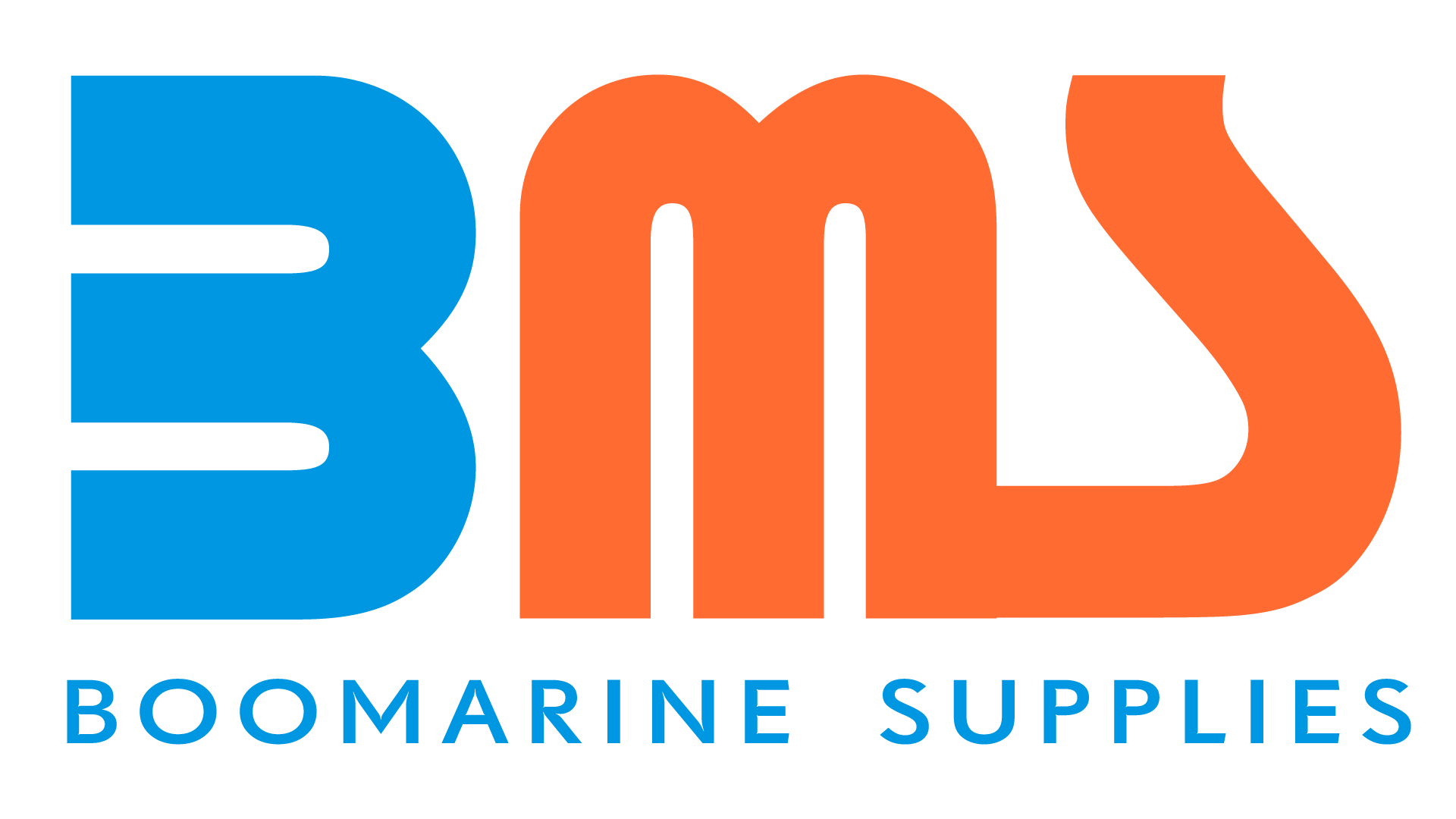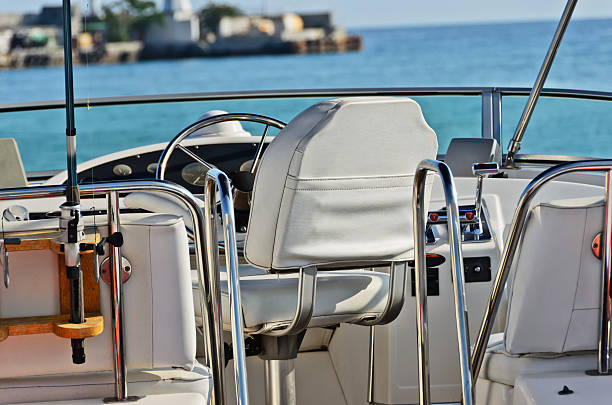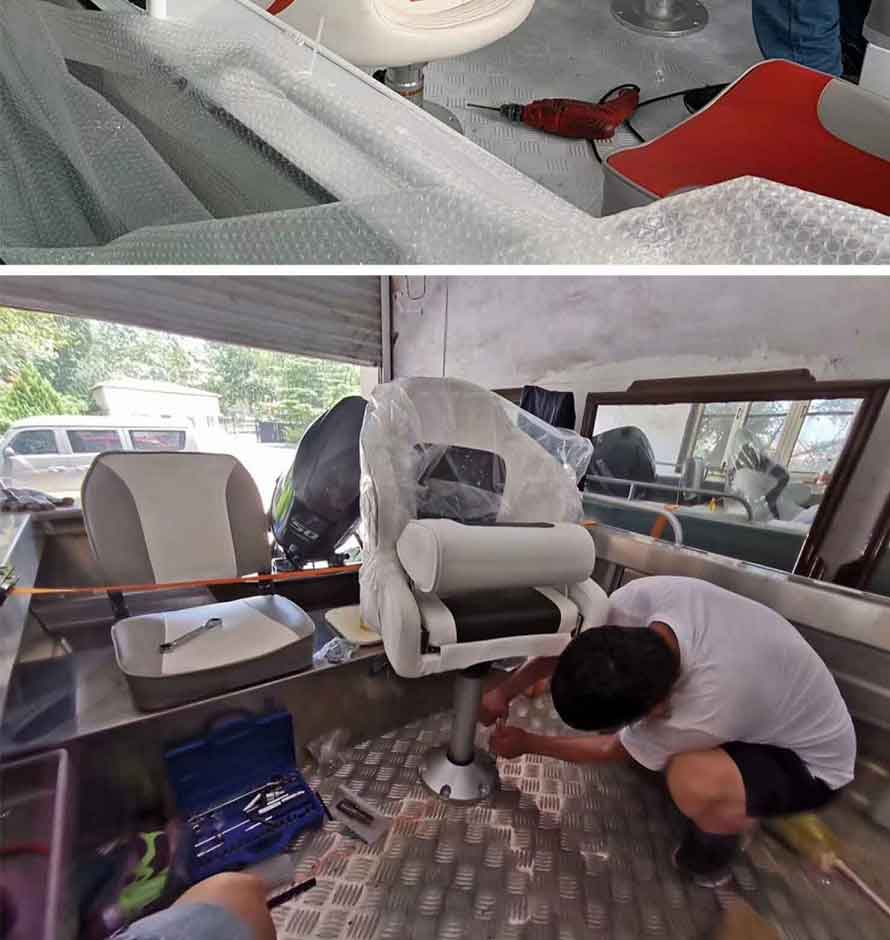In the daily maintenance of ships, the cleaning and maintenance of marine seats often have a direct impact on the ship’s user experience and equipment longevity. For professionals, mastering scientific cleaning methods can not only improve service quality, but also make accurate decisions when purchasing cleaning supplies. Imagine that after the customer’s ship has been carefully cleaned, the seats still maintain a new texture. Behind this is not only the embodiment of maintenance technology, but also the implementation of professional knowledge of marine supplies. This article will systematically analyze the cleaning logic of marine seats, from material characteristics to tool selection, and from step-by-step operation to emergency treatment, providing a set of solutions that are both professional and practical.
What Are The Common Materials for Marine Seats?
Marine seats, as equipment that is constantly exposed to complex Marine environments, need to be made of materials that take into account durability, water resistance and UV resistance. At present, the mainstream materials for Marine seats in the market mainly include vinyl, canvas, leather and some composite materials. Among them, marine seat vinyl, with its excellent anti-corrosion, anti-mold and easy-to-clean properties, has become the preferred material for more than 90% of small and medium-sized ships. Although canvas material has good air permeability, its stain resistance is relatively weak. Leather has a good texture but a relatively high maintenance cost. No matter what material of seats your ship is equipped with, in the face of common problems such as seawater erosion, sun exposure, and oil stains, scientific cleaning methods are the core to extending the service life. So, how should ship seats of different materials be cleaned efficiently without damaging the materials? This is precisely the key point we are going to delve into next.
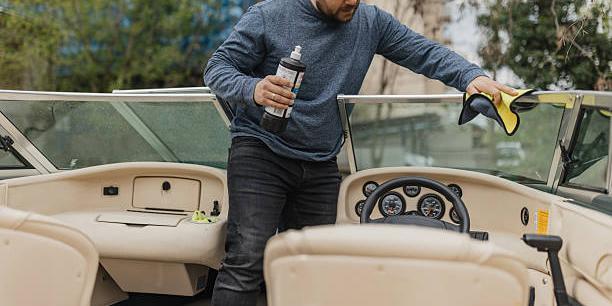
What Preparations Are Needed Before Cleaning Marine Seats?
Professional cleaning results begin with scientific preparation. Boat seats of different materials have completely different requirements for cleaning tools and chemicals. Blind operation may lead to accelerated aging of the materials or incomplete cleaning. Have you ever caused customer complaints due to choosing the wrong cleaning products? The following is a preparation list for different materials to help you precisely match the cleaning plan
For marine seat vinyl material, Prepare a dedicated vinyl cleaner with a neutral pH value (avoid alcohol, bleach or acidic components), a soft nylon brush (the bristle length is recommended to be 5-10mm), a microfiber cleaning cloth (with a density of 300gsm or above is better), a plastic scraper (the edges should be smooth and free of burrs), and a small handheld vacuum cleaner.
For canvas seats, an additional soft-bristled brush (avoid using wire brushes), a special canvas cleaner and a waterproof spray (for maintenance after cleaning) are required. For leather materials, a special leather cleaner, conditioner (care agent) and a soft cloth must be provided. It is strictly prohibited to use cleaning products containing alcohol or acid.
Special reminder: When purchasing cleaning tools, it is necessary to confirm the material compatibility of the tools – for example, for the cleaning brush used in marine seat vinyl, the hardness of its bristles should be controlled within the range of 30-40D, which can effectively remove stains without scratching the surface texture.

Cleaning Steps For Marine Seats
General preprocessing process
No matter what material the Marine seat is made of, the pretreatment before cleaning is of vital importance. First, use a handheld vacuum cleaner to thoroughly remove dust, sand particles and debris from the surface of the seat. Pay special attention to residual impurities in the crevices and seams – if these particles are not removed, they may cause surface scratches during subsequent cleaning processes. Then, initially rinse the seats with clean water. For ships parked outdoors, it is recommended to let them stand in a cool place for 10 minutes first to avoid the rapid evaporation of the cleaning agent at high temperatures, which may affect the effect.
Detailed Instructions for cleaning marine seat vinyl
As the most widely used material for marine seats, the cleaning of marine seat vinyl needs to follow the principle of “gentle and efficient“. The specific steps are as follows:
- For mild stain treatment: Dilute neutral vinyl cleaner at a ratio of 1:10, then use a microfiber cloth dipped in the solution to gently wipe the stained area. Be sure to wipe along the direction of the material’s texture to avoid texture damage caused by circular friction. Immediately wipe off the residual detergent with a damp cloth soaked in clean water after wiping to prevent oxidation reactions of chemical components under sunlight.
- Moderate stain treatment: For stubborn stains such as oil stains and sweat stains, you can directly spray undiluted special vinyl cleaner on the stain area, let it stand for 3-5 minutes (do not exceed 10 minutes), and after the cleaner has fully penetrated, gently brush it with a soft-bristled brush. When brushing, keep the force even and move it back and forth at a distance of 2-3cm. After completion, thoroughly rinse with clean water and gently scrape off the excess water on the surface with a plastic scraper.
- Mold spot treatment: When mold spots are found on the surface of marine seat vinyl, a special mold remover with a chlorine content of less than 5% should be used. First, to ensure no fading will occur, conduct a test in a vicinity that is discreet. After that, spray the mold spot area with a spray bottle ensuring even coverage, allowing it to sit for five minutes, and then agitating the surface gently with a soft-bristled brush. Finally, rinsing at least three times with water is necessary to eliminate all residues of the repair mold remover.
Other material cleaning tips
Once the pre-treatment is completed on the canvas material seats, the special canvas cleaner should be applied evenly and scrubbed with a soft brush to lift concentrated stains. After the cleaning process is done, the material should be rinsed thoroughly with clean water until all the cleanser has been removed. Finally, let it dry naturally and then spray waterproof spray to restore its waterproof performance.
Leather marine seats should be cleaned with a dedicated cleaner. Dip a soft cloth in a small amount of the cleaner and gently wipe in a circular motion to avoid excessive force that may cause the leather to lose its luster. After cleaning, leather care agent must be applied evenly with a dry cloth and left to absorb, forming a protective film to prevent water penetration.
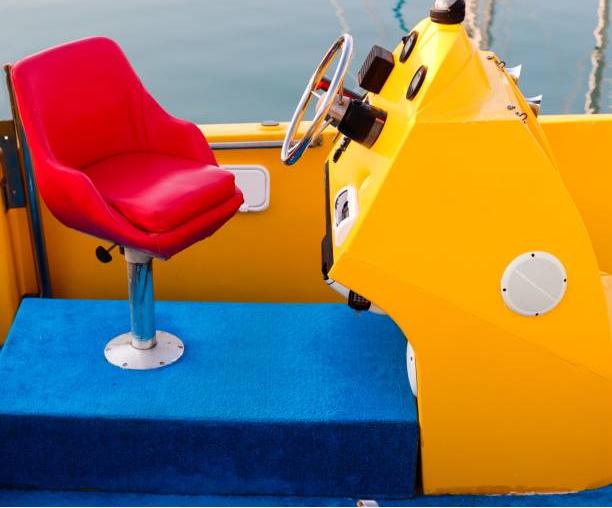
First Aid Solutions For Common Problems
During navigation, it is inevitable to encounter sudden stains. Timely and effective emergency treatment can prevent permanent damage.
- Emergency for spilled beverages: Whether it is seawater, fruit juice or carbonated beverages, after splashing, immediately absorb the liquid with a dry cloth (do not wipe to avoid the spread of stains), then gently press and absorb with a cloth soaked in clean water, and finally apply a special marine seat vinyl cleaner for local treatment.
- Oil stain first aid: Engine oil stains or food oil stains need to be dealt with within one hour. First, use a paper towel to absorb the excess oil, then apply a small amount of neutral detergent directly to the stain, gently pat with a soft cloth until the stain fades, and finally wipe clean with water.
- Sunscreen residue treatment: Sunscreen containing zinc oxide will form a white residue that is difficult to remove on the surface of marine seat vinyl. Once discovered, it should be immediately sprayed with a special cleaner with an alcohol content of less than 5%, and quickly wiped with a soft cloth. Repeat this process 3-4 times until the residue disappears.
Special note: After emergency handling, it is recommended to conduct a comprehensive cleaning within 24 hours to prevent residual components from continuously eroding the material. As purchasing staff, it is advisable to always keep portable marine seat vinyl cleaner and microfiber cloth in the ship first aid kit to deal with emergencies.
Precautions
When cleaning Marine seats, the following precautions must be strictly followed, which are also important reference standards when purchasing cleaning products:
Material compatibility verification: Newly purchased cleaning agents must be tested in a concealed area of the seat. After standing for 24 hours, check for any discoloration, hardening or texture changes. Only after confirming safety can they be fully used. Special note: marine seat vinyl does not use cleaning agents containing alcohol, acetone or ammonia water. These components can damage the UV-resistant coating on the surface.
Tool usage specifications: Under no circumstances should wire brushes, abrasive sponges or hard plastic brushes be used to clean marine seat vinyl. These tools can cause irreversible surface scratches. Cleaning tools should be disinfected regularly to prevent bacterial growth that may affect their next use.
Environmental control requirements: Cleaning operations should be avoided in direct sunlight or environments with temperatures exceeding 30℃. High temperatures can cause the active ingredients in the cleaning agent to decompose prematurely and may also lead to rapid evaporation of water, leaving cleaning marks.
Chemical Safety reminder: Rubber gloves must be worn when handling the cleaning agent to avoid direct contact with the skin. When purchasing cleaning agents, one should choose regular products with MSDS (Material Safety Data Sheet) to ensure that storage and use comply with safety standards.
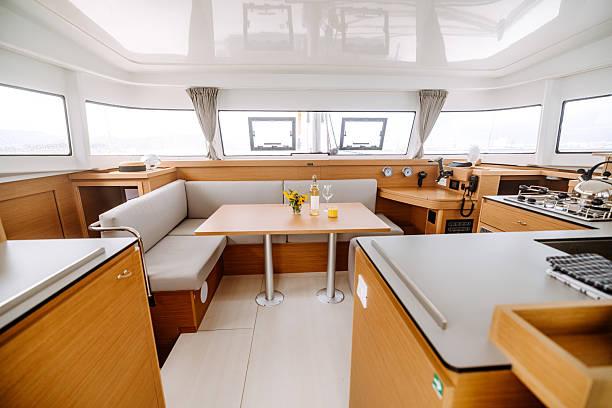
Drying and Maintenance
The drying treatment after cleaning directly affects the service life of the seats. For the marine seat vinyl material, after cleaning, the surface moisture should be absorbed with a microfiber cloth first, and then the vessel should be moored in a well-ventilated area to keep the air circulating. If you need to accelerate the drying process, you can use a low-speed fan (at least 1 meter away from the seat) for assistance, but it is strictly forbidden to use a hot air gun or open flame for heating.
After drying is completed, professional maintenance must be carried out: marine seat vinyl needs to be coated with a special protective agent (containing UV inhibitor components), evenly coated with a soft cloth to form a protective film, and maintained at least once every quarter; Canvas material needs to be sprayed with waterproof and anti-fouling spray to enhance the surface’s anti-fouling ability. Leather materials need to be regularly coated with care oil to maintain their flexibility.
Suggested maintenance frequency: Adjust according to the usage frequency. For vessels used once a week, clean at least once a month and conduct a comprehensive maintenance once every quarter. Ships that have been parked for a long time need to have their surfaces cleaned and protective agents replenished before each use. When purchasing maintenance products, priority should be given to professional-grade products clearly marked “Suitable for marine seat vinyl”, whose protective effect is usually 2 to 3 times that of ordinary products.
Final Words
Scientific cleaning of marine seats can not only keep the ship beautiful, but also significantly extend the service life of the equipment. For ship owners, mastering the cleaning characteristics of seats of different materials – especially the professional cleaning knowledge of marine seat vinyl, can make more accurate choices when purchasing cleaning supplies and provide customers with more professional supporting services.
Remember, high-quality cleaning results come from three elements: suitable cleaning products, correct operating methods and regular maintenance. When the cleaning solution you recommend to your customers can not only effectively remove stains but also protect the seat material, this not only reflects your professionalism, but also establishes long-term cooperation and trust. Let every cleaning become an opportunity to enhance the value of the ship, and let professional cleaning solutions become an important part of your business competitiveness.
